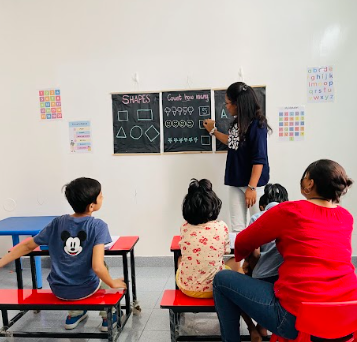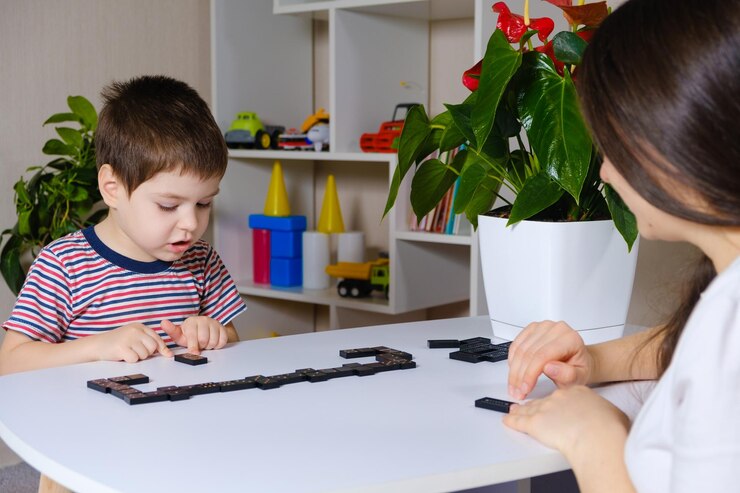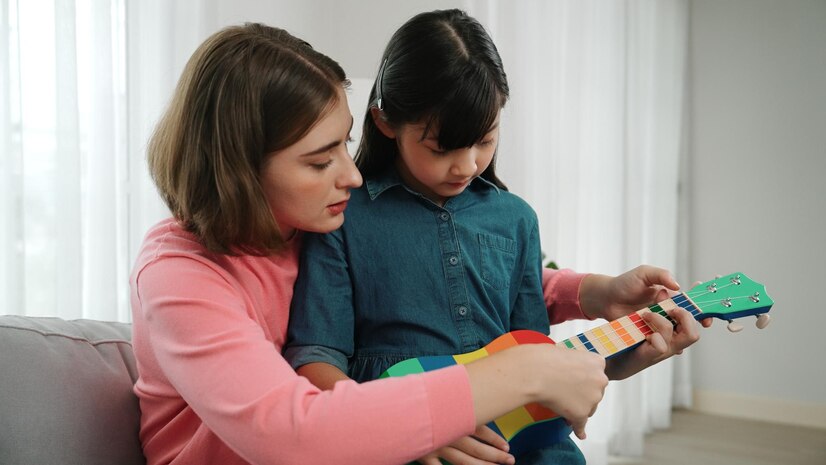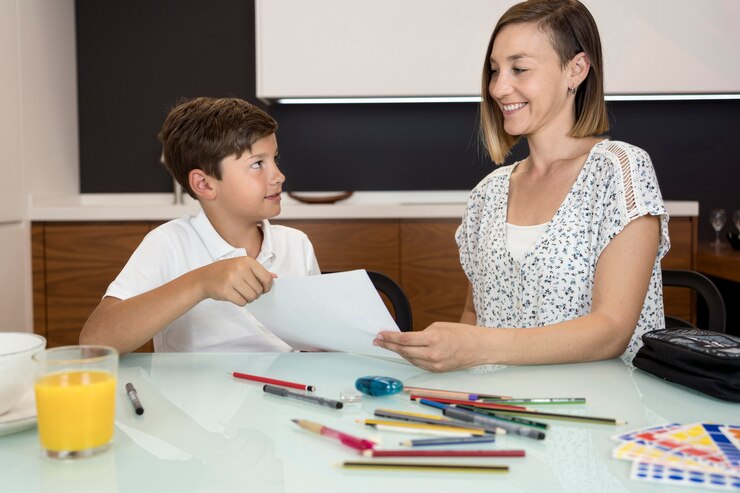
If parenting came with an instruction manual, we’d all be a lot less stressed (and probably get more sleep).
But here’s the thing: when your child is in ABA therapy, you’re not just a bystander, but an essential part of the team. Think of yourself as the ultimate support crew, equipped with tools, mindsets, and maybe a secret stash of patience for those challenging days!
Let’s talk about what belongs in your “therapy backpack”, the mental and practical tools that’ll help you maximize every session, support your child’s progress, and maintain your sanity along the way.
Because understanding how does ABA therapy work is just the beginning; knowing how to actively participate is what transforms everything.
Understanding ABA Therapy: Your Foundation
Before we pack that backpack, let’s get clear on what we’re working with. ABA therapy (Applied Behavior Analysis) is an evidence-based approach that helps children with autism develop essential skills and reduce challenging behaviors.
Research published in the Journal of Applied Behavior Analysis shows that intensive autism ABA therapy can lead to significant improvements in communication, social skills, and adaptive behaviors, with some children making gains of 25-40% in cognitive and language functioning.
At its core, how does ABA therapy work?
It breaks down complex skills into manageable steps, using positive reinforcement to encourage desired behaviors. When your child successfully completes a task, whether it’s making eye contact, using a new word, or waiting their turn, they receive immediate praise or rewards. This isn’t bribery (we see you, skeptics); it’s science-backed learning theory that builds confidence and competence.
Tool 1: The Curious Observer Mindset
Here’s where you become part detective, part scientist. Your BCBA (Board Certified Behavior Analyst) will work with your family to identify goals, but you’re the one who sees your child in every context, morning meltdowns, grocery store triumphs, bedtime negotiations that rival UN peace talks.
Schedule a free consultation with Early Autism Ventures (EAV) to learn how our expert BCBAs and QBAs can help you and your little one.
Our team trains parents to recognize patterns, track triggers, and celebrate micro-progress that others might miss.
One of the biggest ABA therapy benefits is personalized intervention. When you share observations with your therapy team, you’re providing invaluable data that shapes your child’s program.
Did your little one finally point to request a snack? That’s communication progress! Did they tolerate a haircut without tears? Sensory win! These details matter enormously for ABA progress monitoring.
Tool 2: Understanding Reinforcement (It’s Not Just About Treats)
Let’s demystify positive and negative reinforcement ABA therapy. Spoiler alert: “negative” doesn’t mean punishment, it means removing something to increase behavior. Confused? You’re not alone.
Positive reinforcement adds something desirable after a behavior (your child shares a toy and receives praise). Negative reinforcement removes something unpleasant (your child uses words instead of screaming, so you remove the frustration by giving them what they need).
Both increase desired behaviors, just through different mechanisms. Read more about it here.
According to a comprehensive review in Behavior Analysis in Practice, positive reinforcement strategies account for approximately 60-70% of effective interventions in quality ABA therapy programs. Understanding this helps you extend therapy principles into daily life, which is where the magic really happens.
Tool 3: Consistency is Your Superpower (Even When You’re Exhausted)
Real talk: consistency is hard. You’re juggling work, siblings, appointments, meals, laundry mountains, and somehow trying to remember if you fed the dog. But here’s why it matters:
ABA therapy progress accelerates dramatically when strategies are consistent across environments.
Think of it like learning a language. If your child only hears English during their one-hour lesson but their mother tongue everywhere else, progress will be slow. But if the whole family incorporates a great balance of English as well as their mother tongue throughout the day? Fluency in both languages happens faster. The same principle applies to behavioral strategies.
EAV’s family-centered approach means we don’t just work with your child, we empower YOU. Our therapists provide practical strategies you can implement during meals, playtime, and daily routines. We’re talking real-world application, not theoretical perfection.
Tool 4: Data Tracking (We Promise, It’s Less Scary Than It Sounds)
“Data” might sound clinical, but it’s actually your best friend for measuring ABA therapy progress. When you track behaviors, skill acquisition, and challenging moments, you create a roadmap showing where you’ve been and where you’re headed.
Studies indicate that structured data collection improves treatment outcomes by a significant percentage compared to subjective observation alone. Your child’s behavior analyst will guide you on what to track, but simple methods work: tally marks on a notepad, quick voice memos, or photos of achievements.
EAV provides user-friendly progress tracking tools that integrate seamlessly into your routine. [Learn more about our approach] and discover how technology can simplify this process without adding to your mental load.
Tool 5: The Celebration Practice
Let’s inject some joy here. One of the most underrated ABA therapy benefits is learning to recognize and celebrate small victories. Did your child make eye contact for three seconds? HUGE. Used a two-word phrase? Phenomenal. Tried a new food without gagging? Oscar-worthy performance.
Neuroscience research shows that celebrating progress activates reward centers in both your brain and your child’s, creating positive associations with effort and learning. Plus, it reminds you that despite the hard days, you’re moving forward.
Tool 6: The Growth Mindset (For You AND Your Child)
Carol Dweck’s research on growth mindset revolutionized education, and it applies beautifully to autism ABA therapy. When challenges arise, and they will, approach them as learning opportunities rather than failures.
Your child didn’t master toileting this week? That’s not failure. That’s data showing we need to adjust our approach. You lost your cool during a meltdown? You’re human. Tomorrow’s a new day with new opportunities. This mindset reduces stress and models resilience for your child.
Tool 7: The Question-Asking Attitude
Your therapy team wants to hear from you. Seriously. Got questions about how does ABA therapy work in specific situations? Ask. Confused about why a particular strategy is used? Ask. Wondering about ABA progress monitoring methods? You guessed it, ask.
The best therapeutic relationships are collaborative. Your BCBA (Board Certified Behavior Analyst) brings expertise in behavioral science; you bring expertise in your unique child. Together, you’re unstoppable.
EAV prioritizes transparent communication. Our therapists schedule regular parent meetings, provide detailed progress reports, and maintain open channels for questions. We believe informed parents are empowered parents. [Schedule your free consultation today] to experience this collaborative difference.
Tool 8: Self-Care Isn’t Selfish
Here’s the uncomfortable truth: you cannot pour from an empty cup. The National Institutes of Health reports that parental stress significantly impacts therapy outcomes. When you’re depleted, consistency wavers, patience thins, and everyone suffers.
Build self-care into your routine like it’s a medical prescription (because frankly, it is). Whether it’s 10 minutes of meditation, a walk around the block, coffee with a friend, or a trashy reality TV show, do it guilt-free. You’re modeling healthy coping for your child while refilling your resilience tank.
How Early Autism Ventures (EAV) Supports Your Journey
At Early Autism Ventures, we recognize that ABA therapy benefits extend far beyond the therapy room. Our comprehensive approach includes:
- Individualized Treatment Plans: Our experienced behavior analysts design programs tailored to your child’s unique strengths, challenges, and family goals
- Parent Training & Support: We equip you with practical tools for implementing positive reinforcement strategies at home
- Evidence-Based Practices: Every intervention is grounded in current research on autism ABA therapy effectiveness
- Flexible Service Delivery: In-home, center-based, and community-based sessions that fit your family’s lifestyle
- Regular Progress Updates: Transparent ABA progress monitoring so you always know where your child stands
- Collaborative Goal Setting: Your input shapes every aspect of your child’s program
Our team understands that choosing ABA therapy is a significant decision. That’s why we offer comprehensive consultations where we answer your questions about positive and negative reinforcement ABA therapy, explain how does ABA therapy work for your specific situation, and outline realistic expectations for ABA therapy progress.
Your Next Step Starts Now
You’ve got the tools. You understand the mindsets. Now it’s time to take action. Every day you wait is a day your child could be building skills, gaining confidence, and unlocking their potential.
Early Autism Ventures is here to walk beside you on this journey. Our compassionate, highly-trained team has helped hundreds of families navigate the ABA therapy landscape with confidence and hope. We don’t just provide therapy, we build partnerships that transform lives.
Schedule your free consultation with EAV today and discover how personalized ABA therapy can create lasting change for your child. Let’s pack that backpack together and start making progress that matters.
Speak with our expert clinicians at +91 89291 53820 or WhatsApp us today and let’s begin this incredible journey together.

































Recent Comments